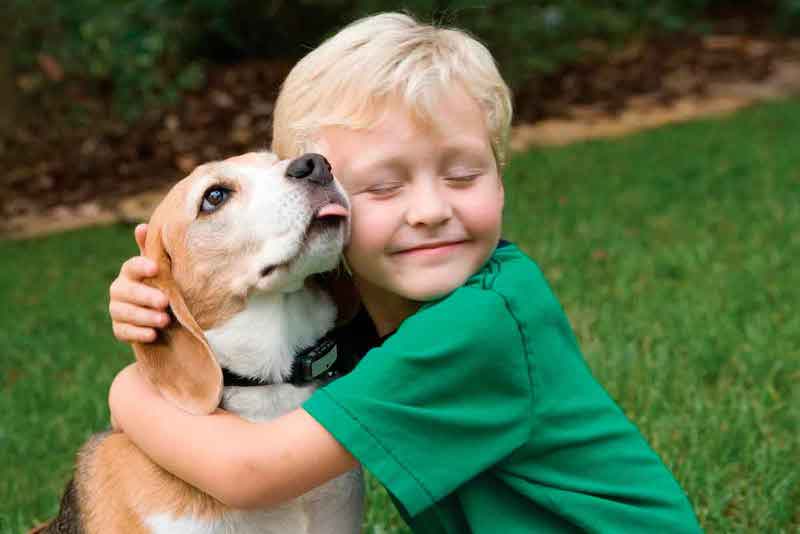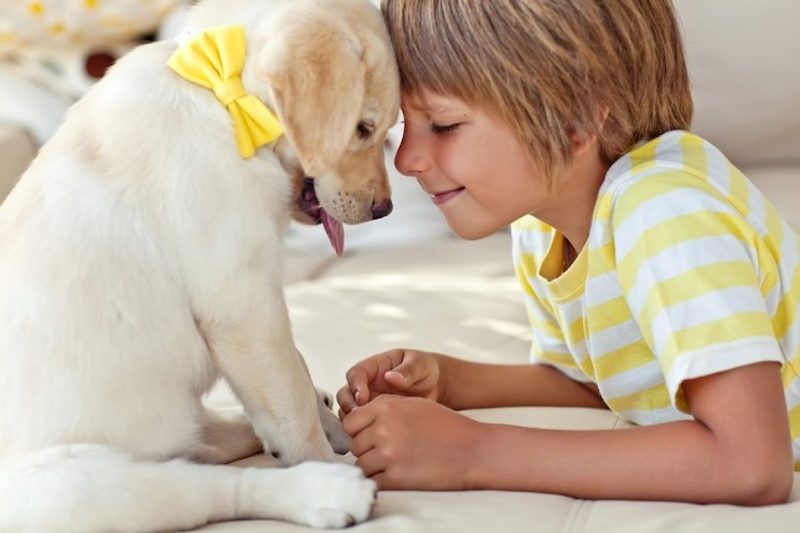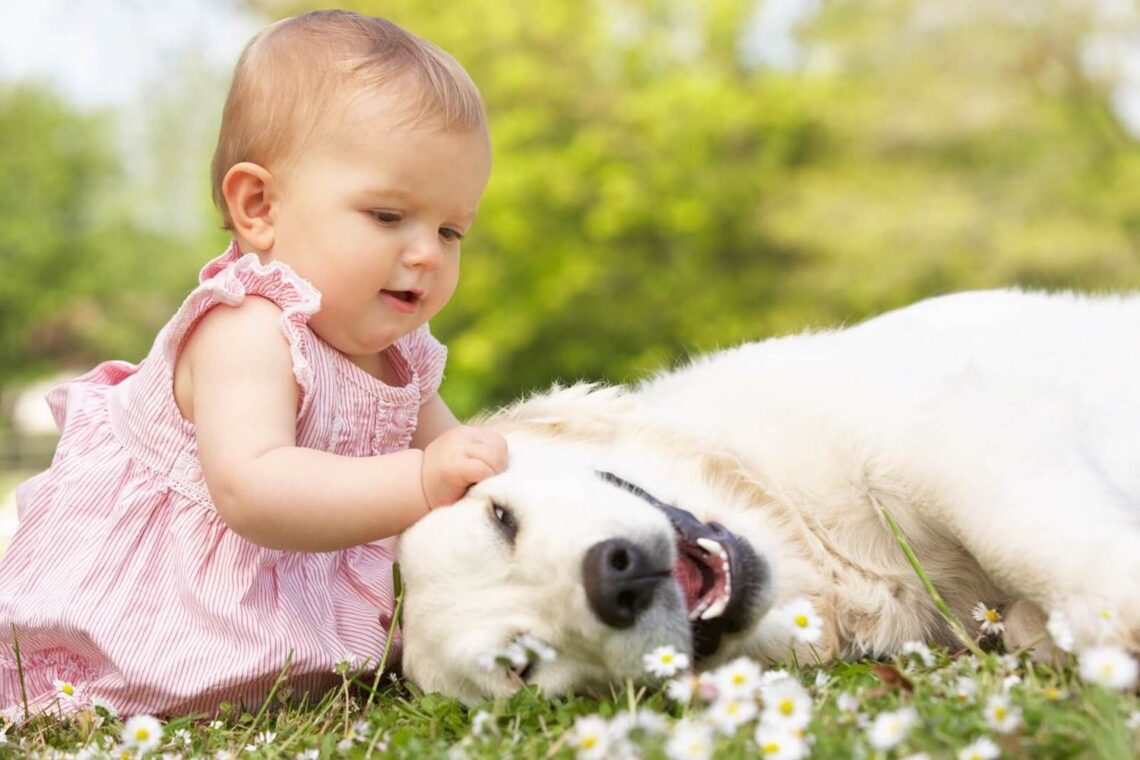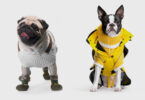Dogs and kids can be great companions. Having a dog inside your house can help kids develop good behaviors and personality, empathy, and respect, and kindness for living things. A dog companion can help the kid to develop his social skills.
But having said so, the relationship between dogs and kids does not always automatically become great the first time they meet. Parents need to train the dog as well as the kid.
Having a pet in the family is great joy and has many benefits for you and your toddler. How do you make sure that everything goes smoothly? Here are some simple rules to follow to avoid behavioral drifts resulting from hierarchy disorders.

The benefits of animals for a child
It is recognized that having a dog has physical benefits by making our move, go out for a walk, but the benefits are also psychological and especially on toddlers.
Several studies have shown that having an animal makes it easier for young kids to contact and interact with others.
The dog is therefore a driving force in communication, socialization, and social integration. It allows you to open up to others.
The dog can also be used to channel hyperactivity and aggressiveness, it promotes the learning of the family organization.
In adolescents, the animal can avoid withdrawal and depression, it encourages psycho-emotional maturation.
How to place your child in relation to the dog in your family
Before starting it is important to understand that a dog does not reason like us, he is incapable of interpreting or analyzing situations or facts dissociated over time. So we are not talking about jealousy, the dog does not feel these feelings, but simply emotions. The dog lives in a world governed by the rules of hierarchy, if he disputes something, he tries to enforce the rules as he thinks they are established.
It is therefore important that you are the pack leader of your family, but it is also important that your kid is in a higher hierarchical position than your dog.
Do not hesitate to often stroke your dog when you are carrying your kid in your arms, this will place your toddler high in relation to him, this will strengthen his hierarchical position.
Always involve your kids in your dog’s favorite activities, such as playing, this will make them more enjoyable because it means having a good time.
If you must reprimand your toddler for something they did in front of the dog, never do it in front of the animal. First, have the dog leave the room and explain yourself to your child afterward. The dog must not be tempted to play an “educator” role.
If you have to reprimand your dog and your kid is present, always place your child next to you: it is necessary to unite, as a coalition, this reinforces the authority and the place of each one.
Regardless of the type, age, and dog breed, parents should never leave the kid alone with the dog. Kids, especially toddlers don’t know how to deal with dogs and cannot control themselves while dogs are still animals in nature with animal instincts. They can be aggressive in no time when hurt or feel threatened.
We must not accept that the kid considers the dog as a toy, we must not tolerate teasing, which can provoke, even if the child’s intention is not bad, a reaction of annoyance from the part of the dog.
Never let the toddler go and disturb your dog when he is calm in his zone of refuge (his bed, basket, cushion, or blanket), this intrusion would be incomprehensible, it is absolutely essential that this zone of refuge be respected. The kid should also not disturb the dog while it is eating.
Likewise, the dog should not be allowed to sleep with the toddler in his room or his bed.
There is no such thing as zero risks, remember that most bites on children are made by the family dog that the parents had complete confidence with. There is no breed more suited to living with them. Kids and females are no more gentle than males with them. There are no rules, apart from those of the hierarchy of the family pack.
The main rules of the hierarchy must be explained to all members of your family, to children as soon as they are old enough to understand them so that they are the same for everyone and the dog is not lost.

Do you have to give in to your child’s request?
Buying a dog should first and foremost be a thoughtful act, there are several things you should consider. The whole family must want your new companion and be ready to invest their time: a dog needs walks, games (especially for puppies), but everyone must also participate in the education of the newcomer. as well as the repair of any damage.
Adopting a dog just to please your child is not a good idea!
Also, remember that adopting a dog comes at a price and everyone including your child should be aware of this. In addition, sometimes you have to keep your dog. If leaving for a weekend or on vacation, then you have to find a pension, which is not always easy.
If you have a dog, you don’t have kids, your dog may meet some when you walk him or with friends or family.
Here are some tips to avoid any risk:
- call your dog back, he must stay at your feet so that you can keep control over him
- always remain vigilant: a child does not always control his movements well and your dog may have fear reactions (primitive and unpredictable)
- children’s play areas are not a playground for dogs, it is not necessary to avoid them but your dog must be kept on a leash
- never let your dog come and go outside your home as he pleases: he is under your responsibility, if anything happens, you will be responsible.







